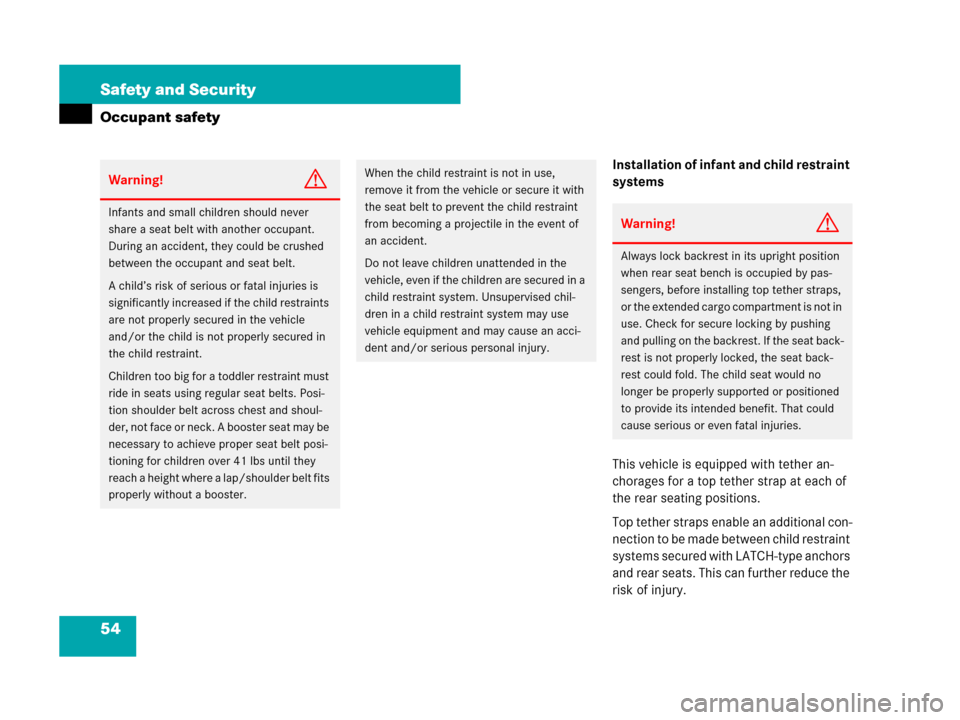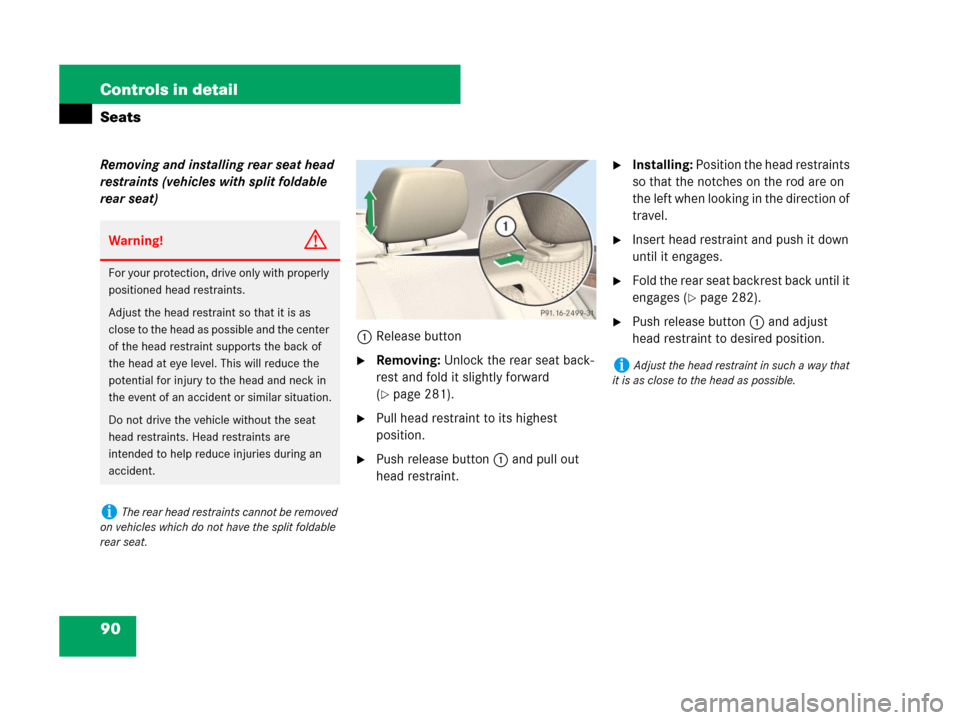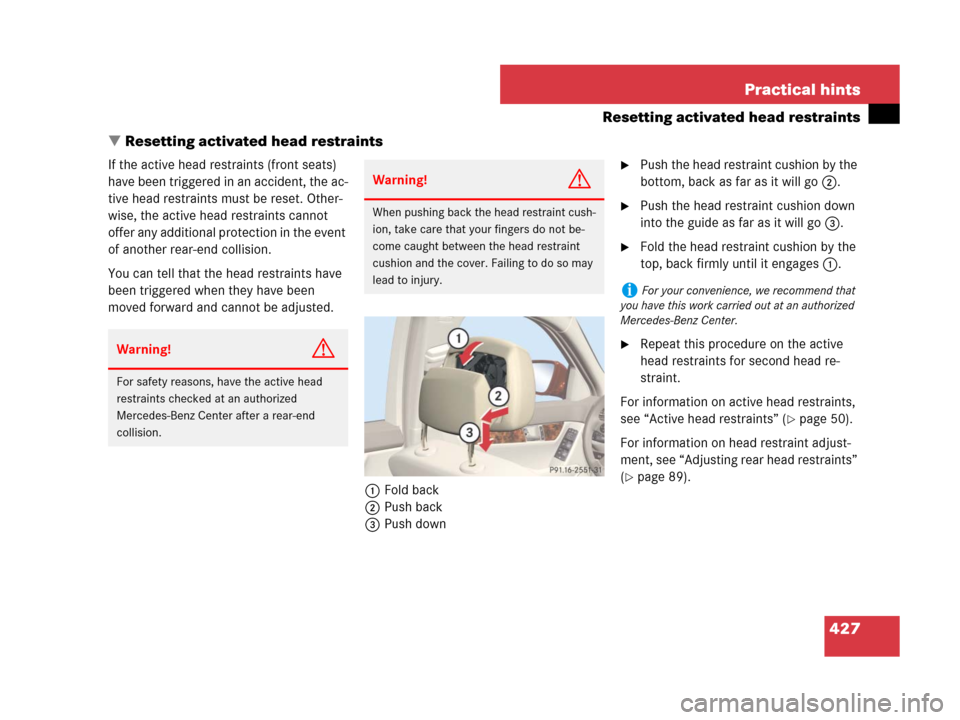Page 55 of 509

54 Safety and Security
Occupant safety
Installation of infant and child restraint
systems
This vehicle is equipped with tether an-
chorages for a top tether strap at each of
the rear seating positions.
Top tether straps enable an additional con-
nection to be made between child restraint
systems secured with LATCH-type anchors
and rear seats. This can further reduce the
risk of injury.
Warning!G
Infants and small children should never
share a seat belt with another occupant.
During an accident, they could be crushed
between the occupant and seat belt.
A child’s risk of serious or fatal injuries is
significantly increased if the child restraints
are not properly secured in the vehicle
and/or the child is not properly secured in
the child restraint.
Children too big for a toddler restraint must
ride in seats using regular seat belts. Posi-
tion shoulder belt across chest and shoul-
der, not face or neck. A booster seat may be
necessary to achieve proper seat belt posi-
tioning for children over 41 lbs until they
reach a height where a lap/shoulder belt fits
properly without a booster.
When the child restraint is not in use,
remove it from the vehicle or secure it with
the seat belt to prevent the child restraint
from becoming a projectile in the event of
an accident.
Do not leave children unattended in the
vehicle, even if the children are secured in a
child restraint system. Unsupervised chil-
dren in a child restraint system may use
vehicle equipment and may cause an acci-
dent and/or serious personal injury.
Warning!G
Always lock backrest in its upright position
when rear seat bench is occupied by pas-
sengers, before installing top tether straps,
or the extended cargo compartment is not in
use. Check for secure locking by pushing
and pulling on the backrest. If the seat back-
rest is not properly locked, the seat back-
rest could fold. The child seat would no
longer be properly supported or positioned
to provide its intended benefit. That could
cause serious or even fatal injuries.
Page 91 of 509

90 Controls in detail
Seats
Removing and installing rear seat head
restraints (vehicles with split foldable
rear seat)
1Release button
�Removing: Unlock the rear seat back-
rest and fold it slightly forward
(
�page 281).
�Pull head restraint to its highest
position.
�Push release button1 and pull out
head restraint.
�Installing: Position the head restraints
so that the notches on the rod are on
the left when looking in the direction of
travel.
�Insert head restraint and push it down
until it engages.
�Fold the rear seat backrest back until it
engages (
�page 282).
�Push release button1 and adjust
head restraint to desired position.
Warning!G
For your protection, drive only with properly
positioned head restraints.
Adjust the head restraint so that it is as
close to the head as possible and the center
of the head restraint supports the back of
the head at eye level. This will reduce the
potential for injury to the head and neck in
the event of an accident or similar situation.
Do not drive the vehicle without the seat
head restraints. Head restraints are
intended to help reduce injuries during an
accident.
iThe rear head restraints cannot be removed
on vehicles which do not have the split foldable
rear seat.
iAdjust the head restraint in such a way that
it is as close to the head as possible.
Page 287 of 509
286 Controls in detail
Loading and storing
Storage compartments in rear passen-
ger compartment
Armrest with integrated storage
compartment
1Release catch
�Opening: Pull down the armrest.
�Pull release catch 1 and swing the
cover upward in direction of arrow.Storage pockets
Storage pockets 1 are located on the
back of the front seats.
!Before storing the armrest in the backrest,
close the storage compartment cover.
!Do not sit on or lean your body weight
against the armrest when it is folded down, as
you could otherwise damage it.
Warning!G
The storage pocket is intended for storing
light-weight items only.
Heavy objects, objects with sharp edges or
fragile objects may not be transported in the
storage pocket. In an accident, during hard
braking, or sudden maneuvers, they could
be thrown around inside the vehicle and
cause injury to vehicle occupants.
The storage pocket cannot protect trans-
ported goods in the event of an accident.
Page 428 of 509

427 Practical hints
Resetting activated head restraints
�Resetting activated head restraints
If the active head restraints (front seats)
have been triggered in an accident, the ac-
tive head restraints must be reset. Other-
wise, the active head restraints cannot
offer any additional protection in the event
of another rear-end collision.
You can tell that the head restraints have
been triggered when they have been
moved forward and cannot be adjusted.
1Fold back
2Push back
3Push down�Push the head restraint cushion by the
bottom, back as far as it will go2.
�Push the head restraint cushion down
into the guide as far as it will go3.
�Fold the head restraint cushion by the
top, back firmly until it engages1.
�Repeat this procedure on the active
head restraints for second head re-
straint.
For information on active head restraints,
see “Active head restraints” (
�page 50).
For information on head restraint adjust-
ment, see “Adjusting rear head restraints”
(
�page 89).
Warning!G
For safety reasons, have the active head
restraints checked at an authorized
Mercedes-Benz Center after a rear-end
collision.
Warning!G
When pushing back the head restraint cush-
ion, take care that your fingers do not be-
come caught between the head restraint
cushion and the cover. Failing to do so may
lead to injury.
iFor your convenience, we recommend that
you have this work carried out at an authorized
Mercedes-Benz Center.